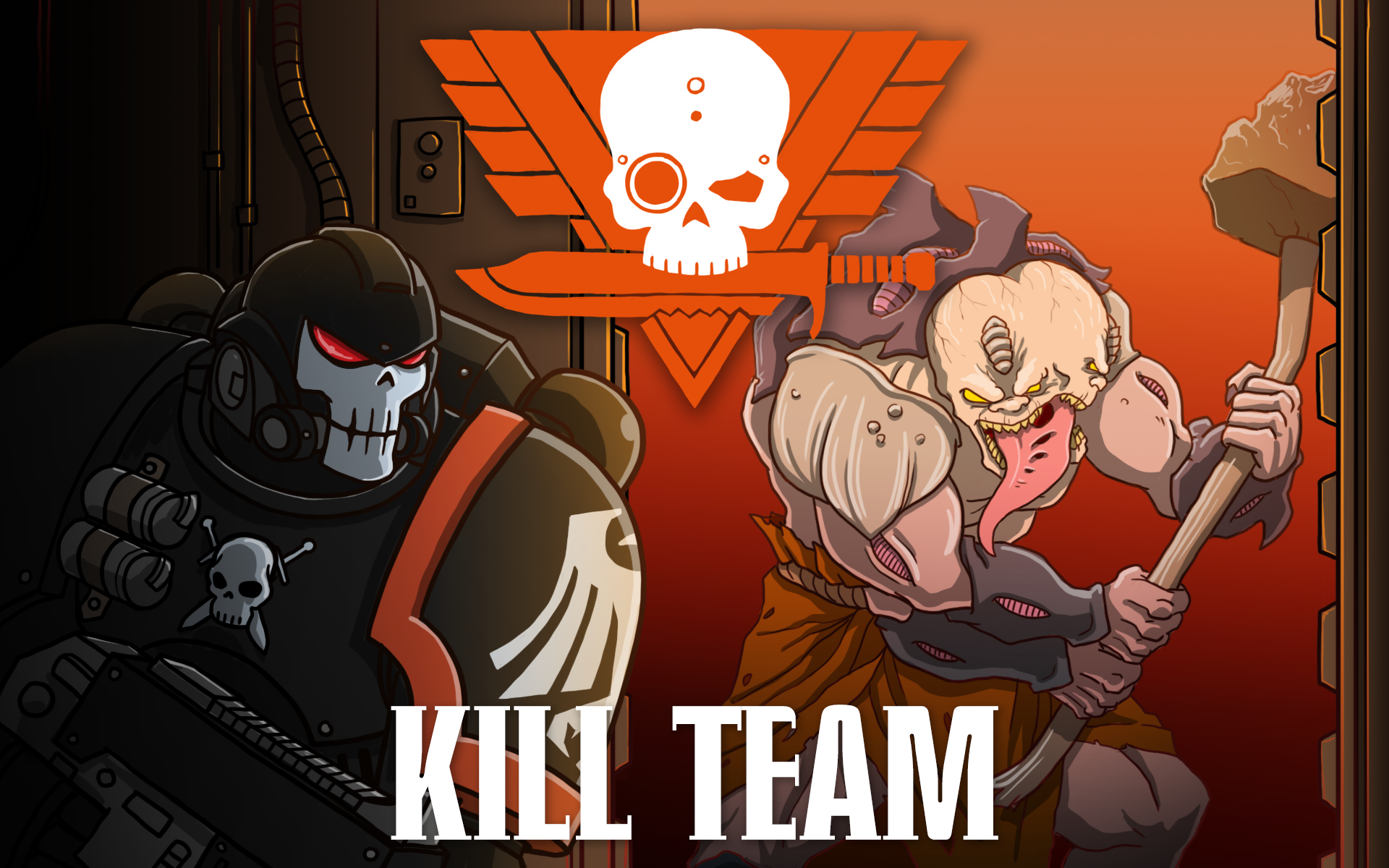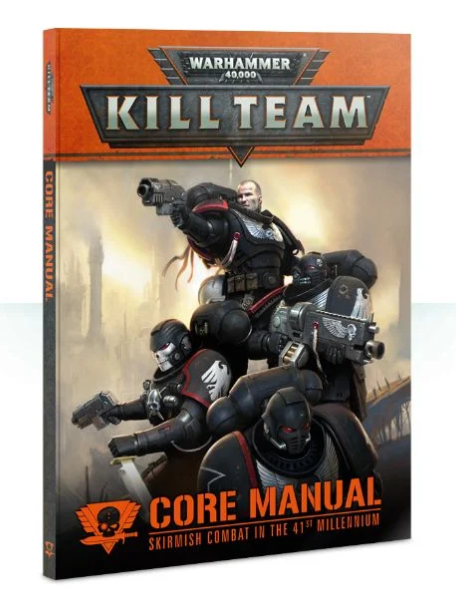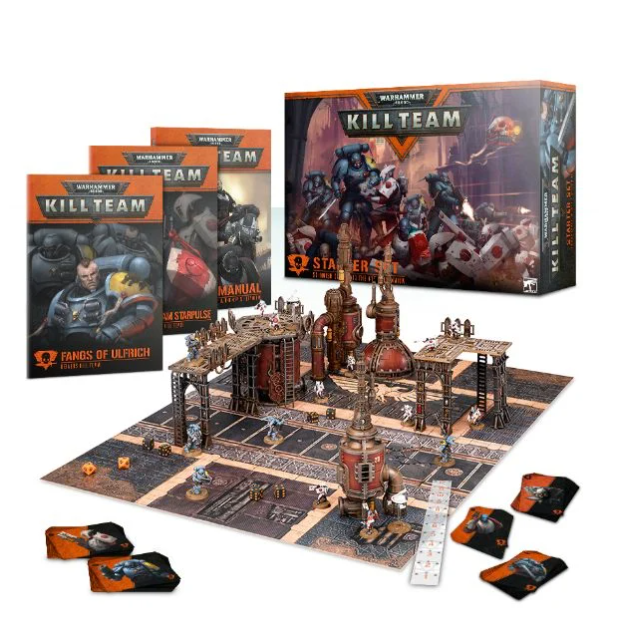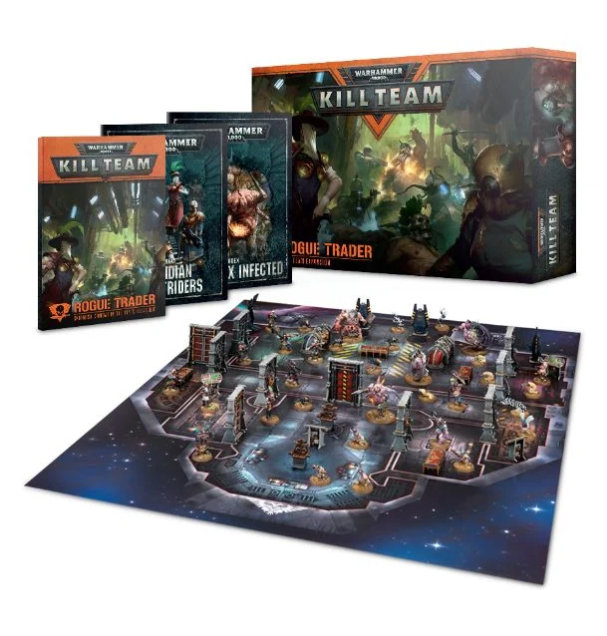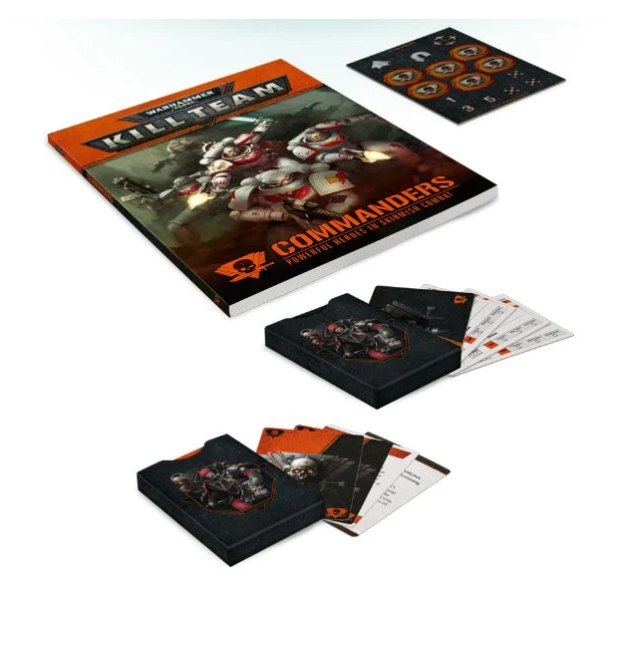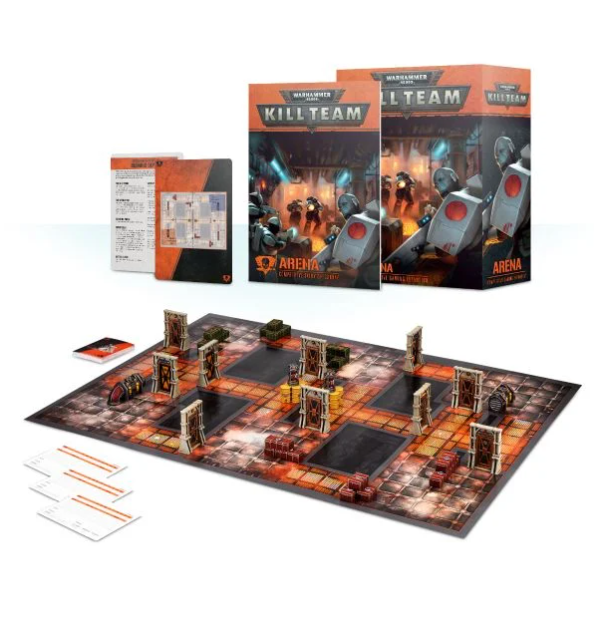At Goonhammer we’ve devoted a lot of words to talking about how to compete and take your game to the next level. In “Getting Started,” we look at how to get started with an army – the basics you need to know, how to start collecting models that will leave you with a serviceable force, and what the best deals are. Today, we’re talking about how to get started in Kill Team.
Designed for smaller, faster games, Kill Team is a game that uses the same models as 8th edition 40k but has an entirely different set of rules. Instead of large armies of squads and vehicles, players run small teams of 2 to 20 models, moving them individually to capture objectives and take out key targets. While building a kill team isn’t as expensive or involved as putting together a standard 40k army, getting into the game can still be a daunting experience so in this article I’m going to talk about the game, the rules you need for it, and whether you’re an experienced 40k vet with multiple armies or a newcomer to miniature wargaming, how you can start building a kill team you’ll be happy with.
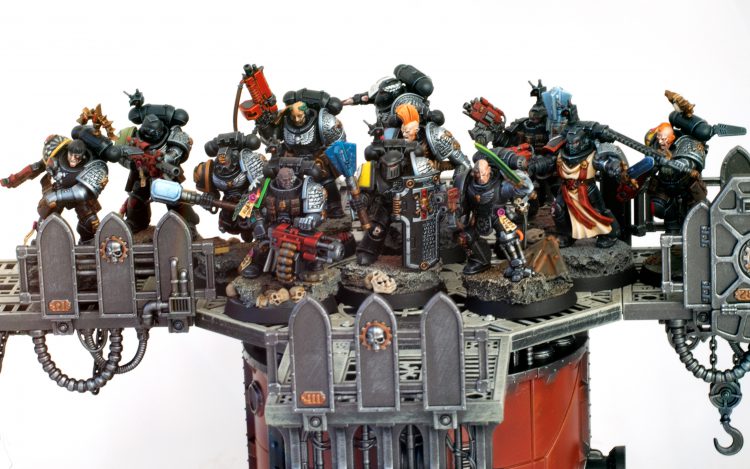
Recommended Steps
Ok, so there are two routes to catalog here. They’re pretty similar, but there are a few differences based on whether you’ve already got a bunch of 40k models and resources to work with.
If you already play Warhammer 40,000:
- Get the rules
- Buy or make a Kill Team board
- Determine what faction you want to play
- Build a kill team
If you are new to 40k:
- Grab the Kill Team boxed set
- Determine what faction you want to play
- Buy or build a kill team
Let’s dig into these steps.
The Rules / Boxed Set
If you already have models and terrain and all that, all you really need is the basic Kill Team Rules. And if you need all the other stuff well, you’re also still going to need the Core Manual. If you’re just starting out and need something that will get you and a friend everything you need to play, then you should consider the Kill Team Boxed Set.
Recently updated to have different terrain and kill teams, the Kill Team boxed set comes with two kill teams – T’au and Space Marines – plus a set of Sector Mechanicus Terrain, a standard Kill Team game board, roster cards, cards for the game’s tactics, a rule, dice, and the Core Manual for Kill Team. It’s the ideal entry point to the game for anyone who wants to play either of those teams, and it’s worth finding a friend to split it with if you can.
You don’t really need anything else to play at this point, but if you like the game and you want to go further, or if you want to start playing competitively, then there are two other books you need to get:
Kill Team Elites introduces a host of new, elite units to the game, plus some additional Commanders (more on those in a bit). It also introduces subfactions for each Kill Team, so if you want to play a special faction like Space Wolves, the Mars Forge World, Craftworld Iyanden, or the Novokh dynasty with your team, this has the rules to do it. Elites overhauls the game in some important ways, expanding kill team and adding some new teams while making others viable. If you like Kill Team, or want to play it seriously or in tournaments, you need Elites. It’s not really an optional expansion for the game so much as the second half of the game’s rules.
The other book you are going to need is the Kill Team Annual 2019. This book acts as a kind of ‘year-end compendium’ for Kill Team, with updated rules and datasheets for the factions. It includes new datasheets for Space Marines and Chaos Space Marines, adds rules for Sisters of Battle, Kroot, and Daemon kill teams, plus re-publishes the rules for Servants of the Abyss and the characters from Blackstone Fortress. Also, it adds new usable Tactics for almost every kill team in the game. It’s a must-have for some factions and generally something that every kill team player should have.
Now you may be saying – “Wait, three books? That’s a lot!” and well, you’re right. The good news is, these are the only books you need. There are also a few other expansions you can look at, but those are add-ons that see varying amounts of play and are largely skippable.
The Expansions
I’ll keep this brief – there are three additional expansions to Kill Team.
Kill Team: Rogue Trader is kind of an interesting dead-end for Kill Team, introducing more narrative, story-driven play with two new kill teams, the Elucidian Starstriders and the Gellerpox Infected. The expansion also includes some of the rules for Commanders. It comes with a reversible kill team board with close quarters battlefields and models for both teams. The models are beautiful but the teams themselves are weak and haven’t gotten any support since the expansion released. You can skip this unless you really want the models.
Kill Team: Commanders introduces a new game mode, letting you play with commanders – elite, multi-wound models like Space Marine Captains, Chaos Lords, and Genestealer Patriarchs. This mode adds new specialisms for Commanders and missions for using them. Commanders is kind of a fun novelty and some people playing it but it’s generally not super popular and you can skip it unless you’re dying to play with commanders.
Kill Team: Arena is a full alternate game mode for Kill Team designed for balanced, competitive games in a confined space. It’s a little bit more buttoned up than standard Kill Team, and it’s a fun and interesting way to play. For a short time, it seemed like Arena could have become the main way to play competitive kill team, but that never really happened. It’s a fun and interesting way to play that benefits different builds and kinds of teams and while I’d recommend buying Arena if you like Kill Team, you can skip it.
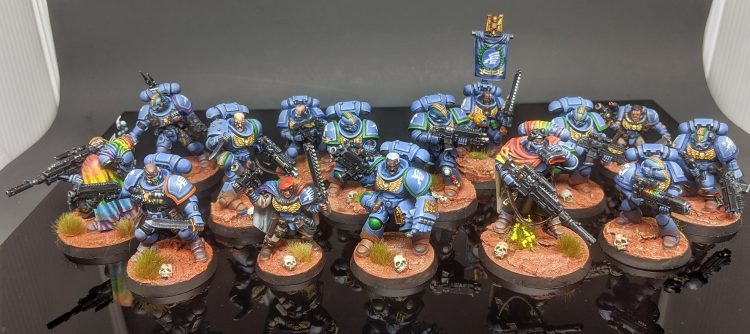
Determine What Faction You Want to Play
After you get the rules, you’ll need to figure out what faction you want to play. If you already play 40k, chances are you have the models already to build a kill team from your existing army. Otherwise, you’ll have to pick up some new models. one of the big challenges with Kill Team is that it doesn’t necessarily lend itself well to buying a single unit box; often when you build a kill team you’ll want 1-2 models from a box of 5-10 across three to five different boxes.
We’ve covered how to play each team, along with their strengths and weaknesses and how to build a good team on our Kill Team Tactics page, which you can find here.
If you’re generally looking for the easiest teams to play, I’d recommend looking at Deathwatch, which you can build around a bunch of Veterans, highly customizable space marines that come five to a box but can be purchased in groups of 10. If you don’t mind going more elite, Adeptus Custodes can be run as kill teams of 2 or 3 models, depending on the game size, and Grey Knights and Harlequins also essentially get you a full kill team in a single box. If you have a copy of Dark Imperium, the 8th edition 40k boxed set, Death Guard and Space Marine kill teams can be built from that and they’re not terrible. Both Sisters of Battle and Sisters of Silence can also squeeze full kill teams out of a single box of 10 models (Battle Sisters or a 10-model box of Sisters of Silence). Finally a single box of Thousand Sons Rubric Marines is also OK, though you’ll eventually want a few Tzaangors to go with them.
Otherwise, start building your team and don’t be afraid to swap models out and tweak it over time. Kill Team gives you a lot of flexibility and you can swap between models as you need and in some cases, subfactions.
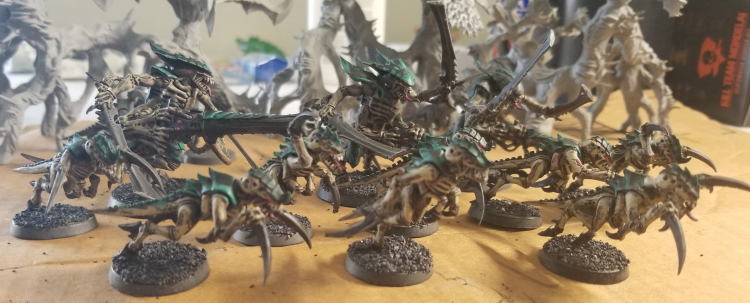
Wrap-Up
Kill Team is a flawed game, but can be a really fun way to play quick games while also giving you an outlet for creating small groups of custom models designed to fit together visually. Hopefully we’ve given you everything you need to get started here but if you have any questions or feedback, drop us a note in the comments below or email us at contact@goonhammer.com.
